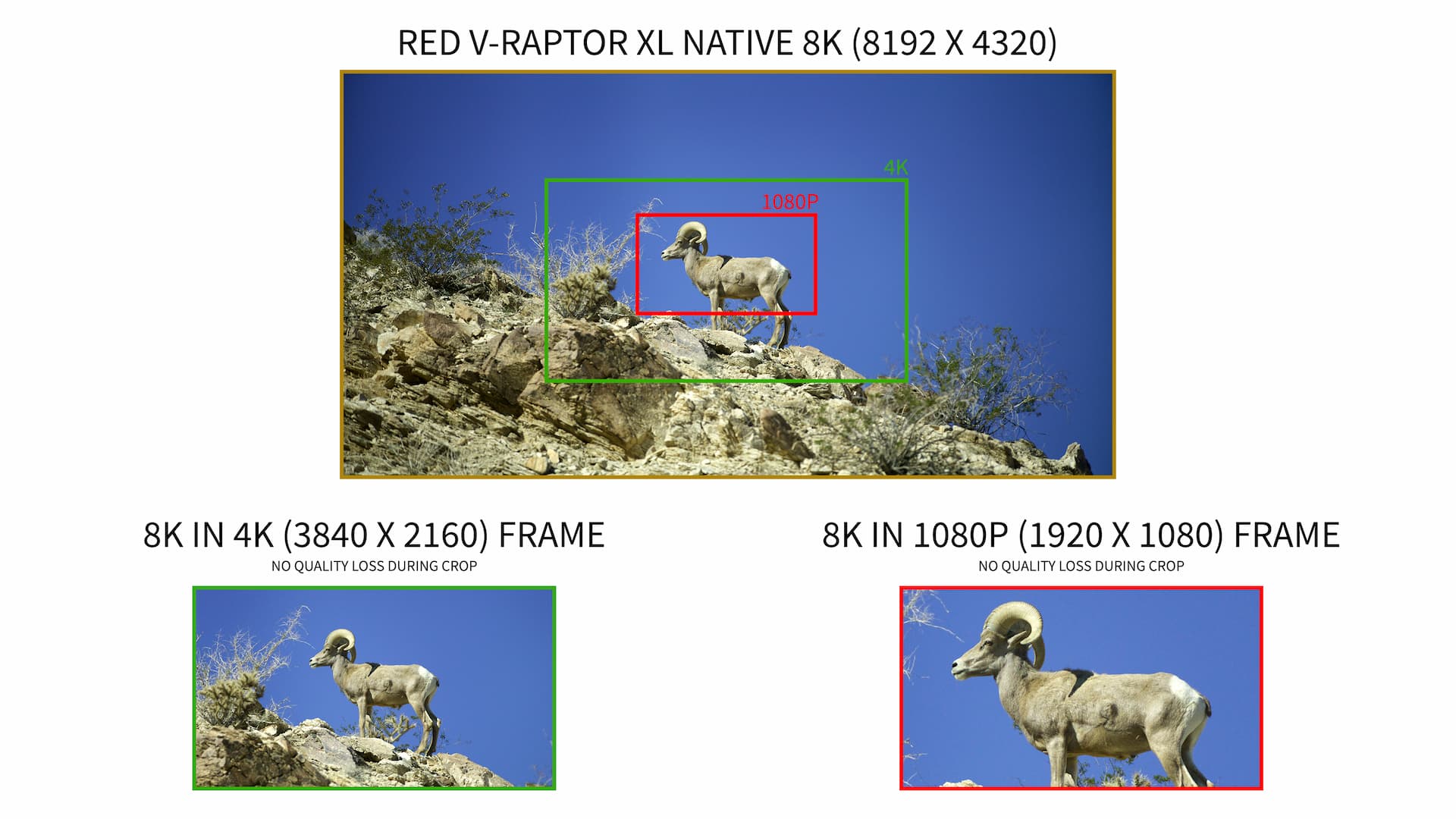What is “Future-Proofing”?
It sounds like a buzzword, right? Something in the sci-fi world and not in your video content strategy.
And how can anything really be “Future-Proof?" Especially with tech like video?
Well, in reality nothing can truly be 100%. But for us, helping you future-proof your video content means making sure you can capture today and use it as far into the future as possible.
Here are some of the most important things to think about as you make sure that footage is as future-proof as possible.
The Best Resolution
In today’s world, 4K has gone from a luxury to the standard. And we fully embrace that. In fact, our latest camera addition, our RED V-Raptor XL actually shoots in up to 8K at high frame rates (aka “slow-mo”).
Without getting too in the weeds here with nerdy video talk, people are already starting to have the conversation of "how high of a resolution can the human eye actually see?" Especially if we are looking at things on phones and other small screen sizes. So, while the video world has moved very quickly from standard def to 1080p to 4K, it is likely that we have hit a plateau for a bit on how much higher the resolution will go right now.
So with that being said, capturing 8K footage today likely means that you will be able to use that footage for the foreseeable future. At least long enough that it's easier to justify the budget spend on the 8K footage that you can likely use for the next three to five+ years.
As a general rule of thumb, we almost always shoot to the highest resolution a camera possibly can specifically for the purpose of making sure that footage lasts as long as possible for our clients. And with cameras like our RED V-Raptor XL and other new top-of-the-line cameras, capturing that footage on 8K makes sure it's as "future-proof" as you are going to get.
Cropping In On 8K
So what does 8K give you, and why should you spend more money on it? Well, basically, by filming in a resolution larger than we'd typically create the final video in (4K) it lets us build a footage library of content that can be used in a lot of different ways, not only now, but for years to come.
In our experience, this conversation happens a lot. “Hey, we’re doing a Quarterly Update and our CEO is talking about the big Plant B expansion we had you guys film several years back. You can just use a piece of b-roll from that shoot in the current video right?”
Well, by filming in the highest resolution we can at the date of filming, it safeguards us (and you) for down the road when we need to answer that question. And by filming in a higher resolution, like 8K, we can even crop in if needed to get rid of background items like old logos or a sign that has the slogan you stopped using two years ago. It happens! And we can crop in to make adjustments and not lose any quality as we go.
Most importantly, because we didn’t have to come back out and re-film it, that little bit of extra cost to bring the 8k camera the first time actually saved you money in the long run.

But Will You Still Have That Footage?
All of this really only matters if you still have your footage years later. At PEG, we essentially keep your footage “forever” unless you ask us not to. So when we use that example above, where we grab that old clip and slot it in, that’s a very real world situation that we do all the time.
And yes, 8K footage takes a lot of storage space to store. Often, our clients don’t even want a copy of the footage for their computers because it’s so large they don’t want to worry about the file space requirements. And that’s fine, we are happy to hold onto that for you far, far into the future.




